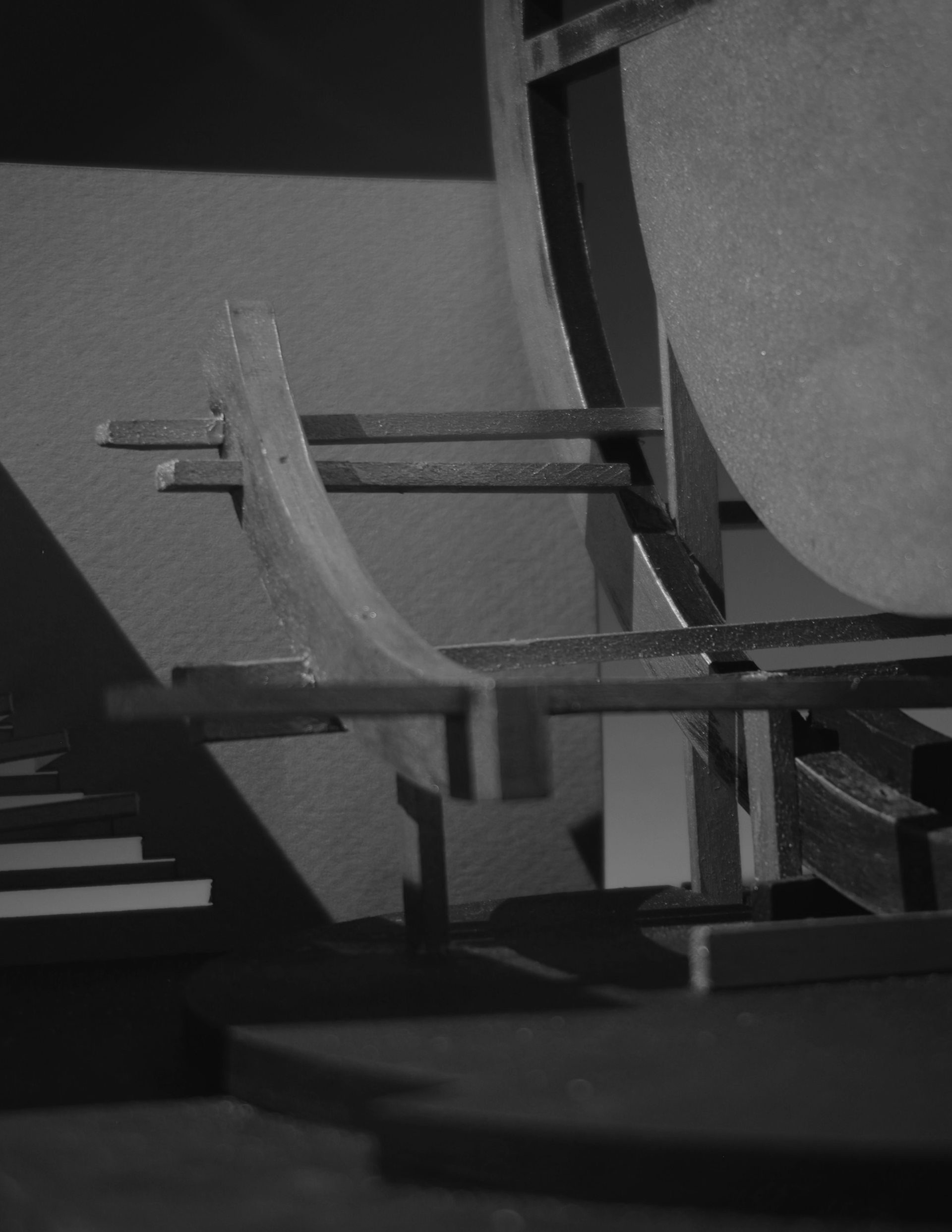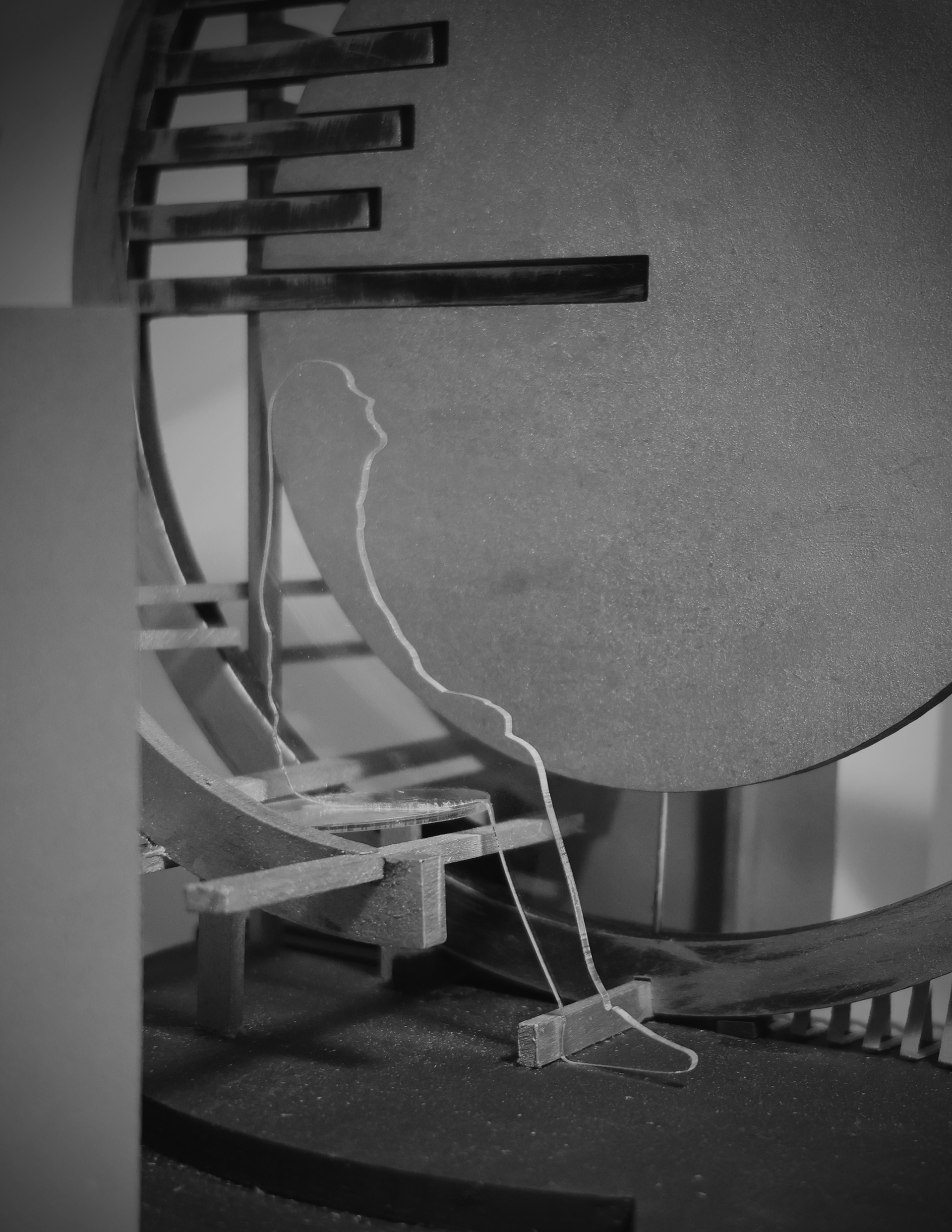Methods and Forms - Studio Spring 2025
Astronomer's Greenhouse - Assignment
Professor Surry Schlabs
Given a client, astronomer, and a program, greenhouse, we were tasked with creating a 9ft x 9ft room.
My initial drawing explores the fragments of the celestial sphere in an environment that is forever expanding and in which no direction of gravity exists.

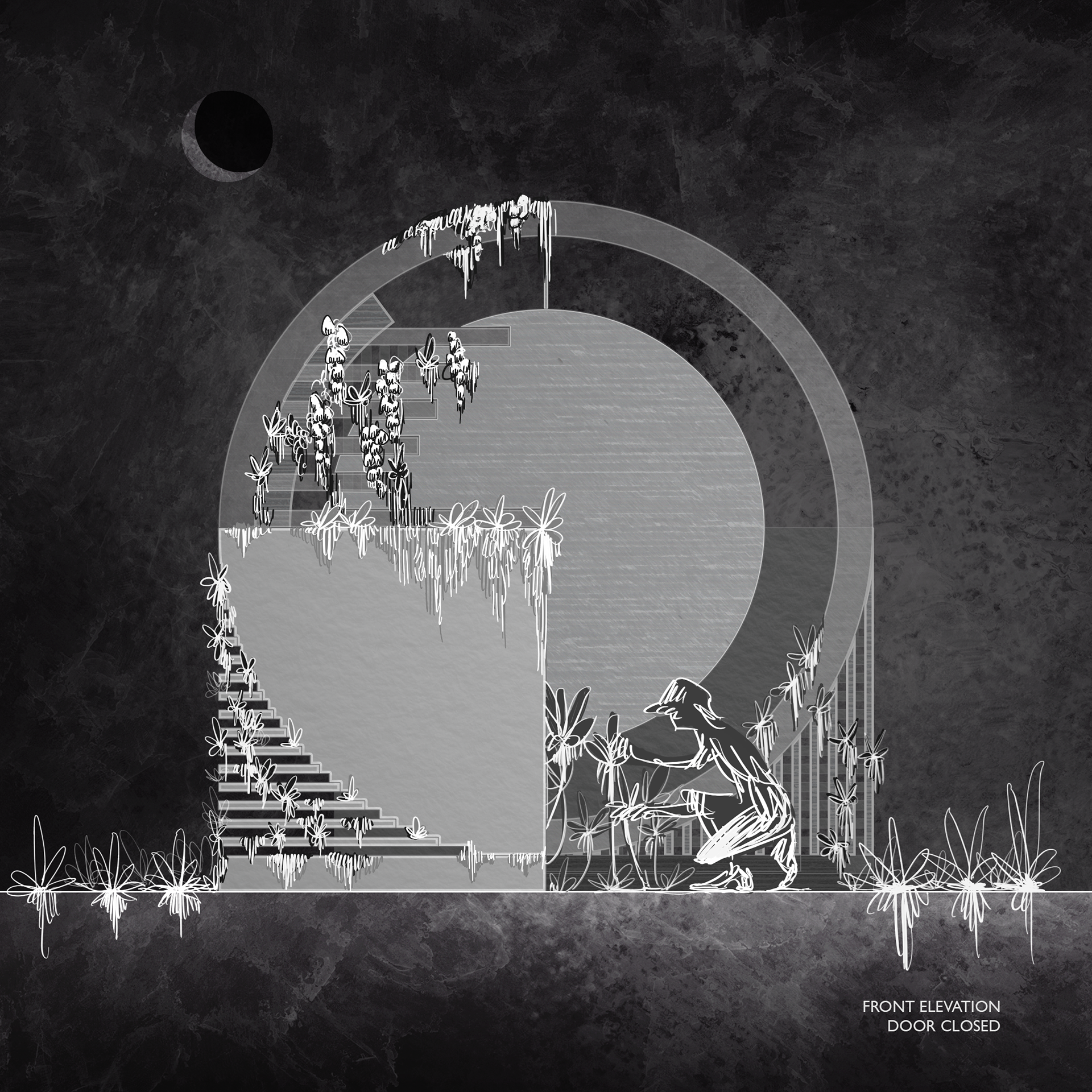
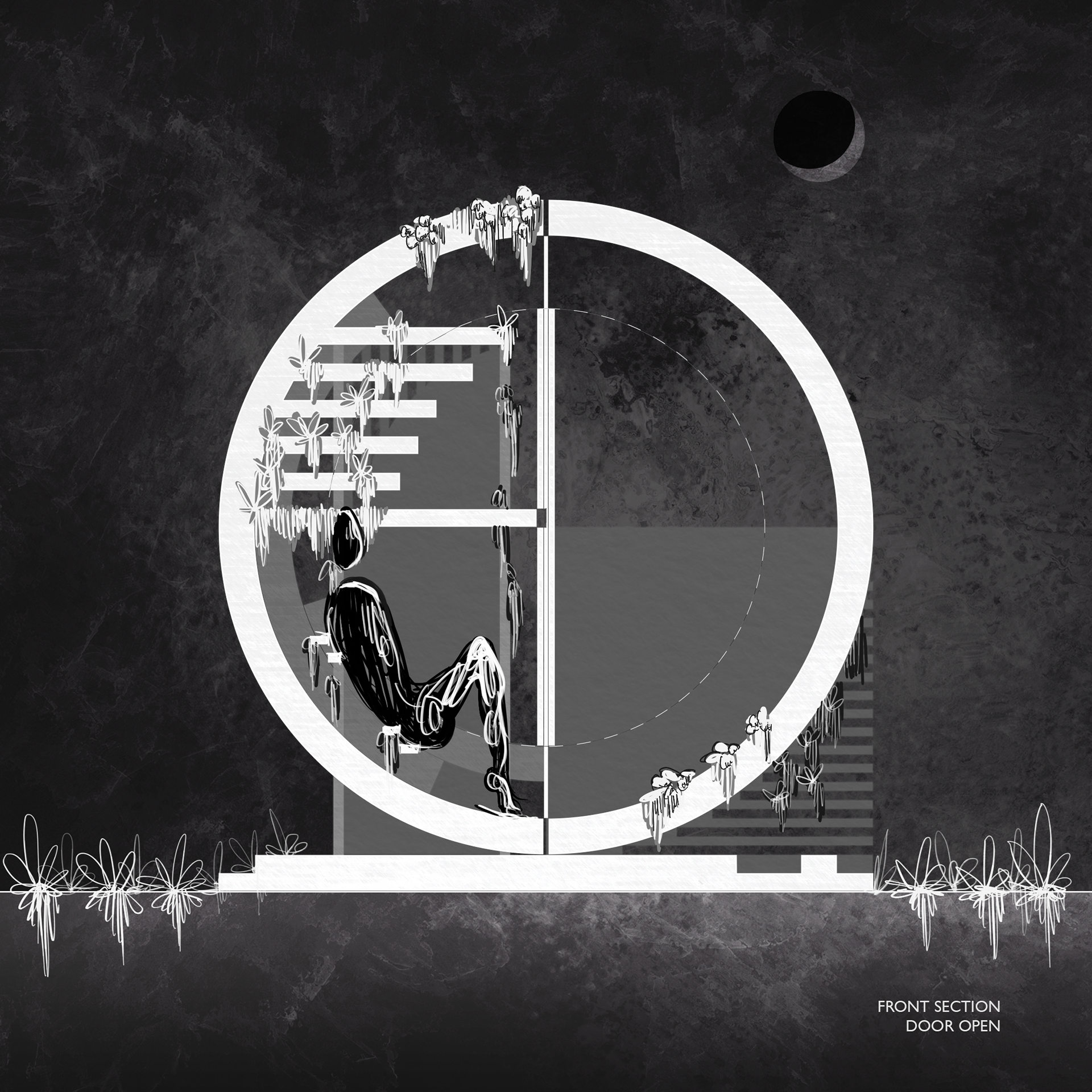
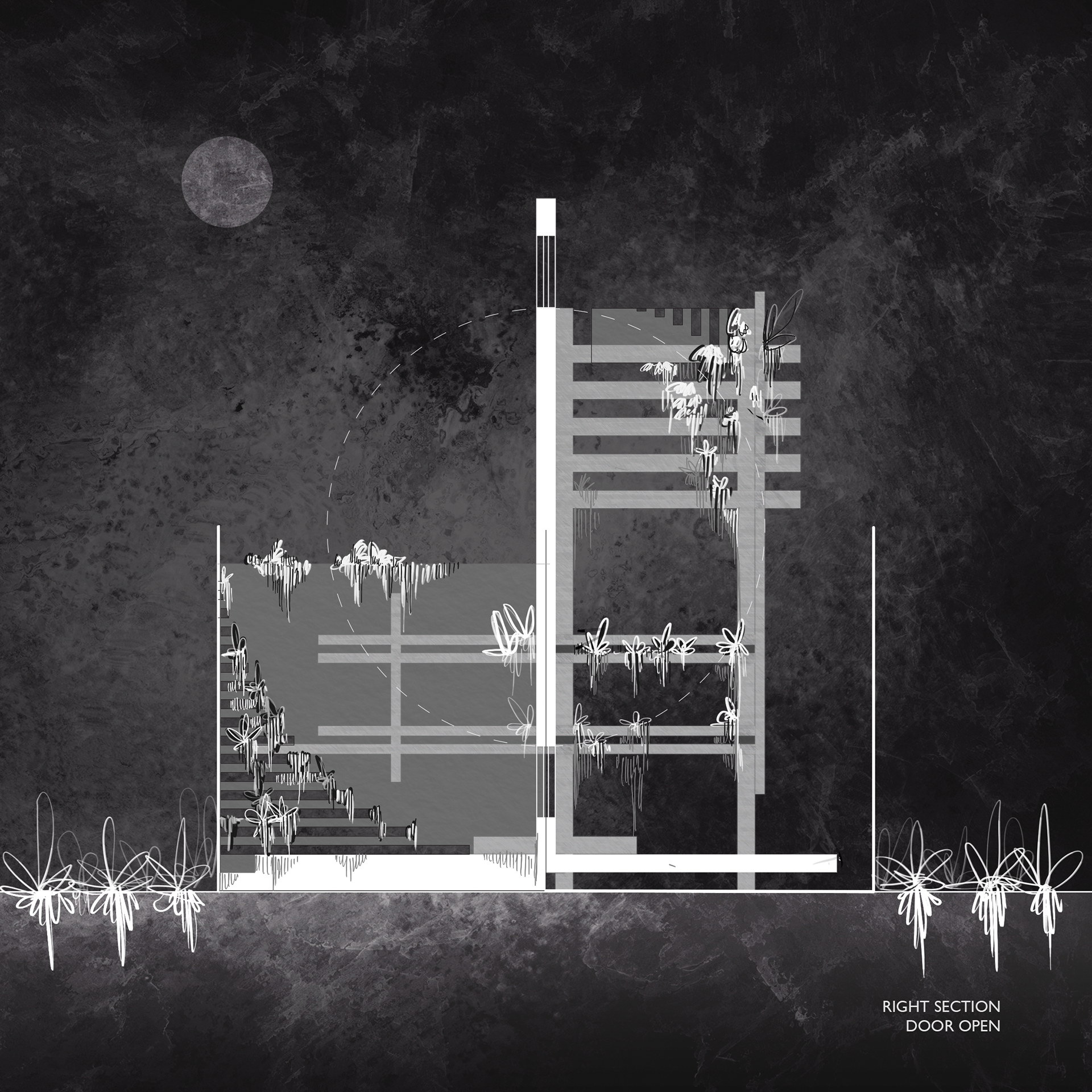
The Greenhouse for an Astronomer is a space built on cycles—of movement, of seasons, of light. It’s a space where form is never whole but always shifting, always fragmenting and reforming, just like the world it sits in.
At its core, the project plays with the idea of the circle—not as a perfect, closed shape, but as something that is implied, broken, and reassembled through space. The central moment of the design is the only complete circle, a point of arrival, a still center in a world that is constantly in motion. And within that center, a revolving door slowly turns, revealing different views of the space, shifting between enclosure and openness.
Like the orbits of planets, like the life of a plant, like our own place in the universe, it is a space that reminds us we are always in motion.
The journey through the greenhouse happens in four quadrants. You begin in an open space, exposed to the sky. Then, as you move forward—pushing the revolving door—you enter a more enclosed environment, where trellises begin to weave overhead. In the third quadrant, the space becomes even more structured, with a roof filtering light and more layers of plant life. Finally, the fourth quadrant brings openness back, with a curved seat facing the stars—an invitation to pause, to look up, to reflect on the vastness above.
The trellises themselves come from folded paper studies, creating fragmented geometries that never quite form a full arc but still suggest the presence of a circle. They provide infinite surfaces for plants to grow—some climbing, some hanging—blurring the boundary between earth and sky. When the sun is low, the trellises cast dramatic, shifting shadows, evoking sun flares, auroras, and planetary movements.


